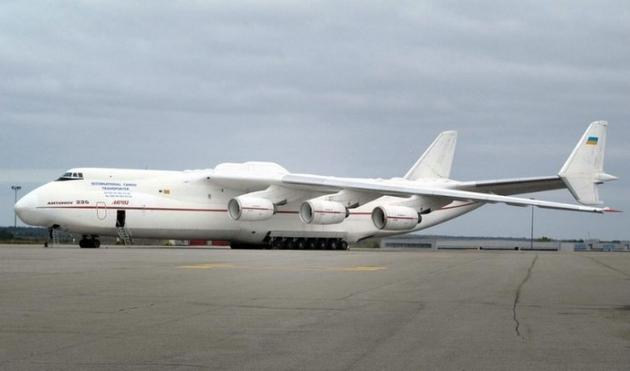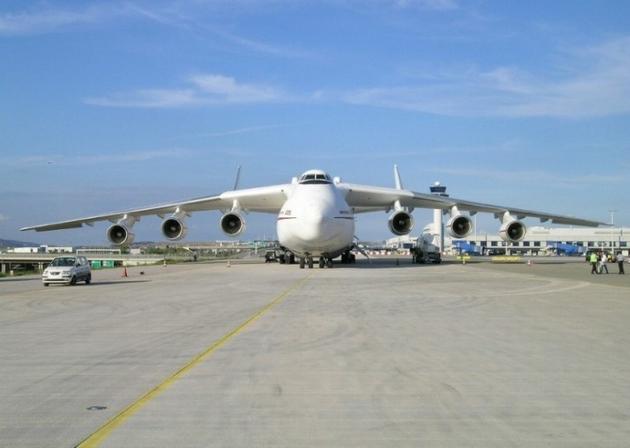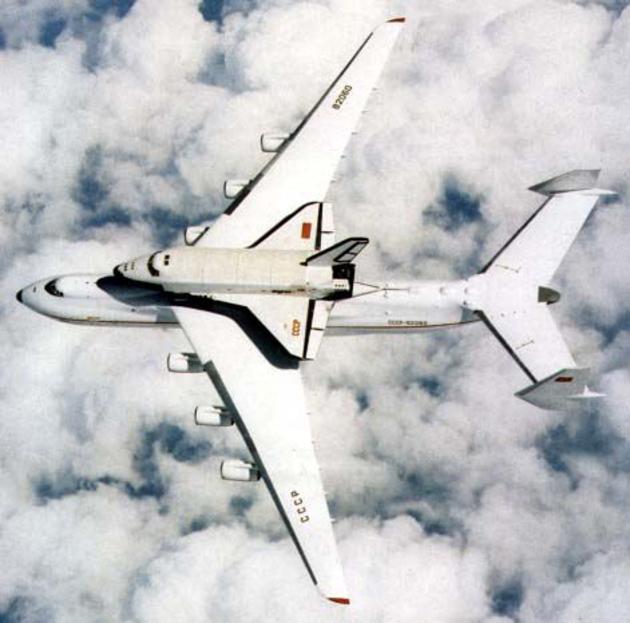Antonov 225 'Mriya' Largest Airplane in the World
Apr 15 2011
The Antonov An-225 Mriya is a strategic airlift cargo aircraft, designed by the Antonov Design Bureau in the 1980s. It is the world's heaviest aircraft. The design, built in order to transport the Buran orbiter, was an enlargement of the successful An-124 Ruslan. The An-225's name, Mriya (Мрiя) means "Dream" (Inspiration) in Ukrainian.
Click on the images to view larger versions.
One An-225 was completed in 1988 and a second An-225 has been partially completed. The one An-225 is in commercial operation carrying oversized payloads.
Based on Antonov's earlier An-124, the An-225 has fuselage barrel extensions added fore and aft of the wings, which received root extensions to increase span. Two more Ivchenko Progress D-18T turbofan engines were added to the new wing roots, bringing the total to six, and an increased-capacity landing gear system with 32 wheels was designed.
The An-124’s rear cargo door and ramp were removed to save weight, and the empennage was changed from a single vertical stabilizer to a twin tail with an oversized horizontal stabilizer. The twin tail was essential to enable the plane to carry large, heavy external loads that would disturb the aerodynamics of a conventional tail. Unlike the An-124, the An-225 was not intended for tactical airlifting and is not designed for short-field operation.
nitially the 225 had a maximum gross weight of 600 tonnes (1,320,000 lb) but the aircraft was modified in 2000-01, at a cost of US$20M, with a reinforced floor that increased the maximum gross weight to 640 tonnes (1,410,000 lb).
Both the earlier and later takeoff weights establish the An-225 as the world's heaviest aircraft, being heavier than the double-decker Airbus A380 even though Airbus plans to pass the An-225's maximum landing weight with 591.7 tonnes (1,304,000 lb) for the A380.
The Hughes H-4 Hercules, known as the "Spruce Goose", had a greater wingspan and a greater overall height, but was 20% shorter, and due to the materials used in its construction, also lighter. In addition, the Hercules only flew once, making the An-225 the largest aircraft in the world to fly multiple times.
The An-225 is larger than the Airbus A380 airliner, and also bigger than the Antonov An-124, Boeing 747 Large Cargo Freighter, and Lockheed C-5 Galaxy, the nearest equivalent heavy cargo aircraft.
The Antonov An-225 was designed to airlift the Energia rocket's boosters and the Buran space shuttle for the Soviet space program. It was developed as a replacement for the Myasishchev VM-T. The An-225's original mission and objectives are almost identical to that of the United States' Shuttle Carrier Aircraft.
The An-225 first flew on 21 December 1988. The aircraft was on static display at the Paris Air Show in 1989 and it flew during the public days at the Farnborough air show in 1990. Two aircraft were ordered, but only one An-225 (tail number UR-82060) was finished. It can carry ultra-heavy and oversize freight, up to 250,000 kg (550,000 lb) internally, or 200,000 kg (440,000 lb) on the upper fuselage. Cargo on the upper fuselage can be 70 metres (230 ft) long.
A second An-225 was partially built during the late 1980s for the Soviet space program. The second An-225 included a rear cargo door and a redesigned tail with a single vertical stabilizer. It was planned to be more effective for cargo transportation. Following the collapse of the Soviet Union in 1991 and the cancellation of the Buran space program, the lone operational An-225 was placed in storage in 1994. The six Ivchenko Progress engines were removed for use on An-124s, and the second uncompleted An-225 airframe was also stored. The first An-225 was later re-engined and put into service.
By 2000, the need for additional An-225 capacity had become apparent, so the decision was made in September 2006 to complete the second An-225. The second airframe was scheduled for completion around 2008, then delayed. By August 2009, the aircraft had not been completed and work had been abandoned.














































